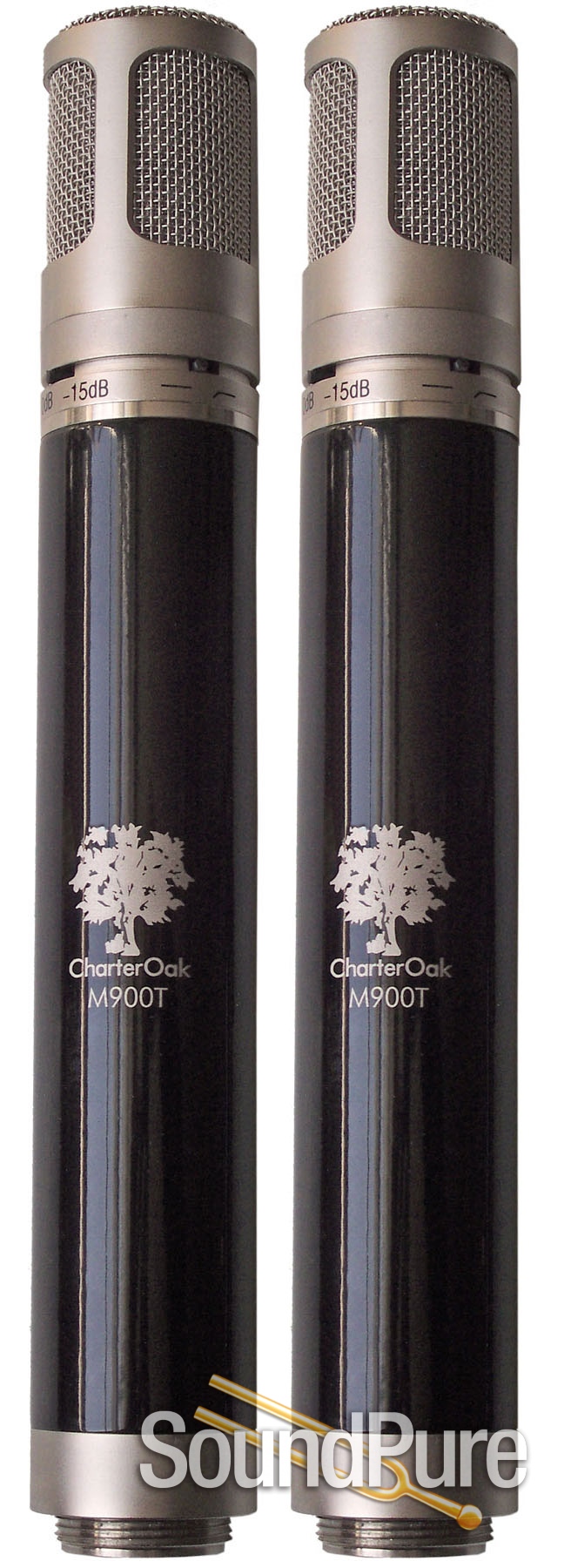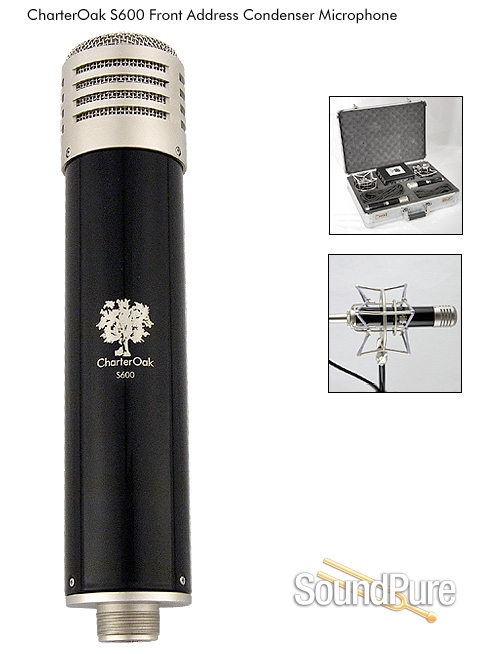A simple drum microphone setup is one of the best ways to really hear the definition of the microphones you’re using and the ways in which they work. Here are two videos using a simple four-mic setup, featuring several microphones in the CharterOak line. In the first video, we use a pair of CharterOaks M900Ts as overheads, and in the second video, we switch them out for a pair of S600s. For both videos, we also use the solid-state CharterOak M900 pencil microphone with the hyper-cardioid capsule attached for the snare, as well as the CharterOak E700 dual-diaphragm solid-state condenser on the kick drum.
The CharterOak M900 with the hyper-cardioid capsule presents the snare accurately, exactly as it is heard in the room. The great thing about the CharterOak hyper is that, despite the incredible SPL of all that goes on around the snare, the microphone tone remains tight and isolated. Take or leave the snare drum’s actual sound in our shoot, the M900 nevertheless does a fantastic job capturing the tone.
The CharterOak E700 is a monstrous microphone with an impressively large diaphragm. It handles low end in an unprecedented way. The off-axis rejection is fabulous. In the videos, the kick drum tone is deep and full, almost as if we had processed it, but rest assured, it is the natural sound of this kick through the Millennia preamp, free of any processing whatsoever.
In the first setup, we use the CharterOak M900t Tube-pencil microphones as overheads. The M900T tube pencil is detailed, but not harsh. They really are very much like a vintage-style tube pencil, picking up a full bottom-end that is not hyped, with rich and concentrated midrange, full of harmonic information, and a smooth but not harsh top-end. It’s difficult to get such great detail without the harshness, but these M900Ts do a beautiful job.
In the second setup, we chose the CharterOak S600 as our stereo pair of overheads. The S600 is a large diaphragm tube microphone. The S600 is an unusual microphone. It delivers a remarkable, unique, and extremely musical sound. It really has an almost ribbon-like frequency response—dark and colored, but at the same time doesn’t have any of the problems associated with ribbons since it is a large diaphragm tube mic. It doesn’t have a figure-8 pattern, instead it has a cardioid directional pattern. Unlike a ribbon, it handles high SPLs, and with the way it handles high frequencies, it can be a brilliant choice for tracking drum overheads—in particular, it’s nice when you don’t have high ceilings, or if you have sheet-rock above the kit that you’d prefer not to be listening to. It tames harsh cymbals and wild playing drummers unfamiliar with a more studio-friendly cymbal-technique. After we add the S600s to the other two microphones on the kit, you can hear them fill out the rest of the sound, but still the character of the S600s is unmistakable. These truly unique-sounding S600 microphones really do some things a little bit differently. Whether you are looking to solve an acoustic problem with your room, or you are looking to add a truly unique microphone to your locker, these S600’s present an extremely interesting choice.
There are infinite possibilities of the different ways that we could EQ, compress, mix, and add reverb to this drum setup, but it all starts with the microphones and getting a great-sounding, detailed, and full sound out of the kit with it completely dry. It’s always impressive to hear how well a simple 4-mic setup can sound, and just how much processing you can get out of it! Towards the end of both videos, you can hear the difference between the dry sound, and some very light EQ and compression added utilizing our pair of Millennia STT-1 Origin channel strips. If you have any questions about this drum setup, the mic choices, or processing questions, please email us or give us a call at Sound Pure and we would be happy to help in any way.



